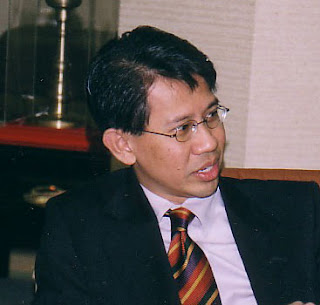Posted on March 24, 2012, Saturday
KUCHING: Naim Holdings Bhd (Naim) is poised to stage a comeback after its poor earnings performance in financial year 2011 with plans to replenish its order book and improve property sales.“Naim’s order book stands at RM800 million which could last it up till the next two years, excluding the Kuching Flood project of RM1.2 billion,” according to a report by Kenanga Investment Bank Bhd (Kenanga Research).
It noted that management expected to replenish the order book by at least another RM450 million in financial year 2012.
The research house pointed out that Naim, through its joint venture partner, had just submitted the tender for the Klang Valley Mass Rapid Transit elevated project. The joint venture would enable both parties to leverage on each other’s expertise, thereby giving it a higher chance of winning the contract.

REMAINING ROBUST: Photo shows one of the construction projects by Naim. Its order book stands at RM800 million which can tide it over for the next two years, excluding the RM1.2 billion Kuching Flood project of.
Kenanga Research went on to explain that Naim had already developed quarters for industrial workers and was actively looking to develop another 800 acres of land for property investment ventures.
The report highlighted that Naim was, at present, partnering with Cahya Mata Sarawak Bhd (CMS) and Bintulu Development Authority (BDA) with the share of 39:51:10 equities on the second home programme for Korean and Japanese expatriates.
On the company’s property sales division, Kenanga Research believed that it had improved as compared to financial year 2011, especially during the month of the Chinese New Year in the first quarter of 2012.
“Management aims to achieve RM300 million sales in financial year 2012 via several more property projects launches like service apartment and street mall in Bintulu with gross development value (GDV) of RM310 million, service apartment and townhouse in Kuching with GDV of RM152 million and shoplots and landed properties in Miri with GDV of RM451 million,” said the research house.
It added that the group was also looking forward to develop more investment properties at their strategically located landbanks especially in Bintulu, which would provide the group a recurring source of income in the future following the success of its first retail mall project in Permyjaya which has the occupancy rate of 90 per cent with yield at eight per cent.
Naim’s investment in Dayang Enterprise Holdings Bhd (Dayang) had proven its fruitfulness as it had consistently contributed about RM30 million per annum for the past two years at the associate level. The research house believed it was a good buffer for Naim during downtimes.
“Moving forward, with a handful of contracts from Petronas, the contribution continue to come in steadily and we do not discount that Dayang will be in the front line to secure more Petronas contracts in the near term,” the report added.




























